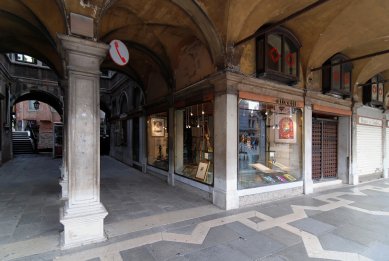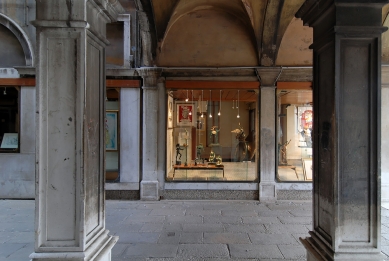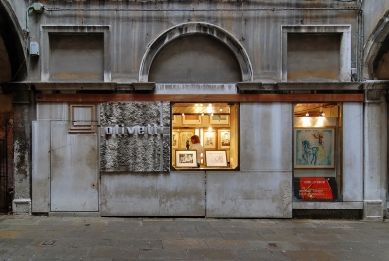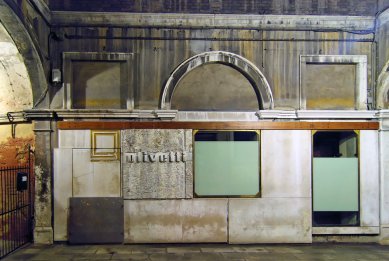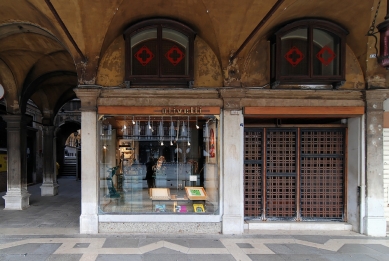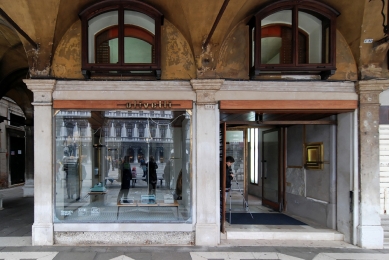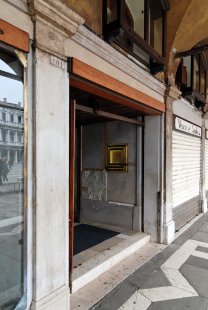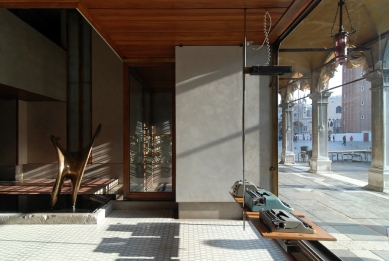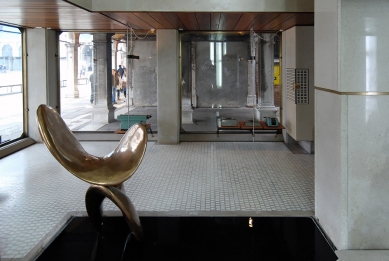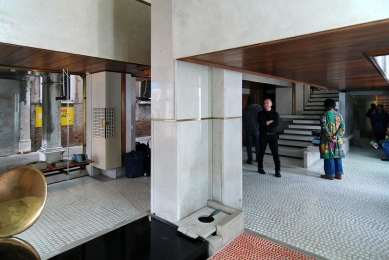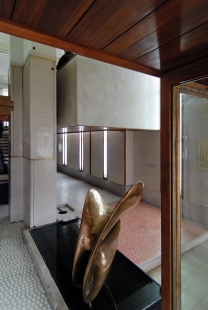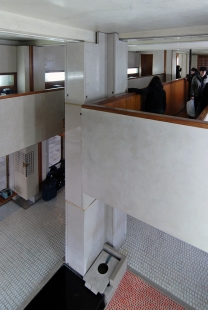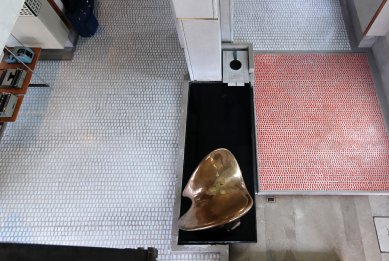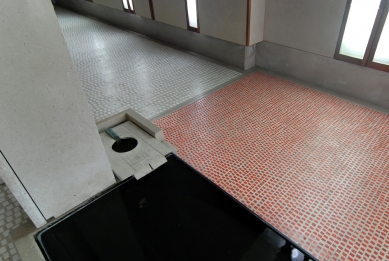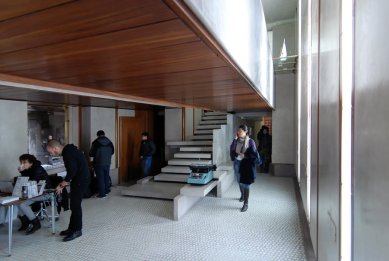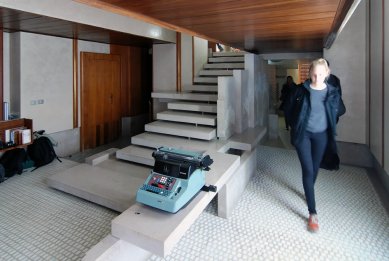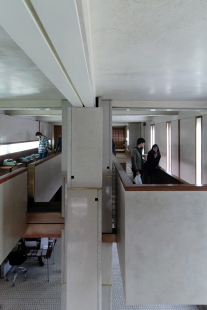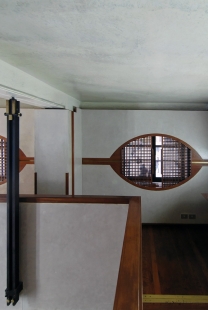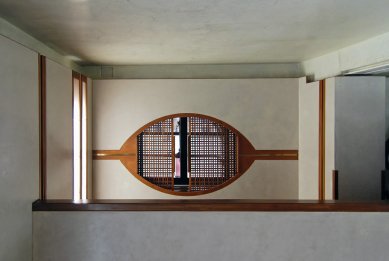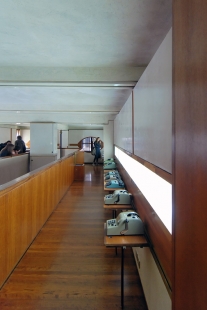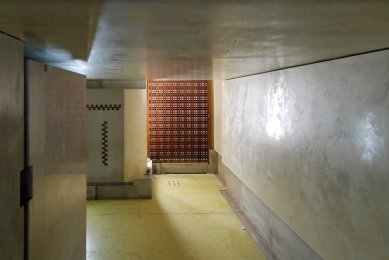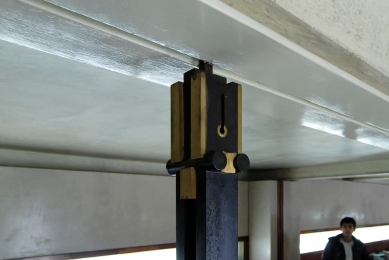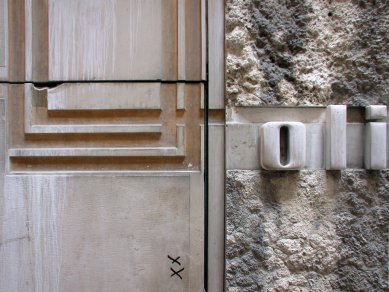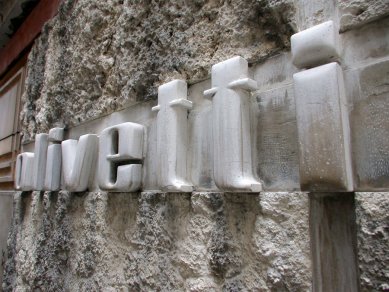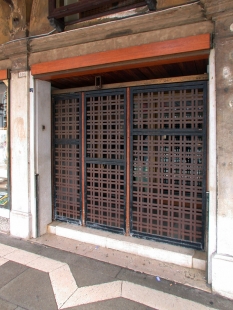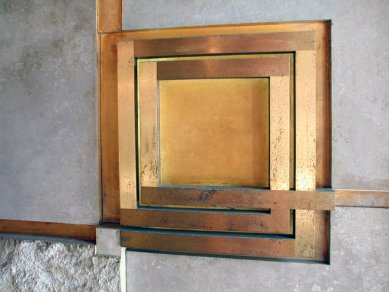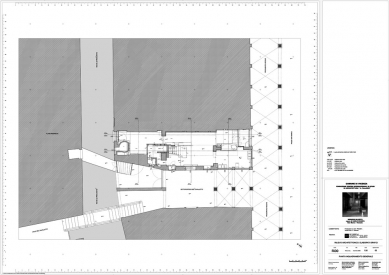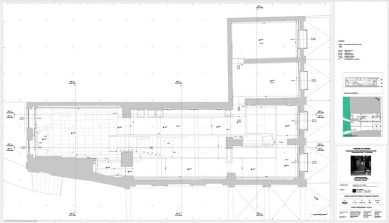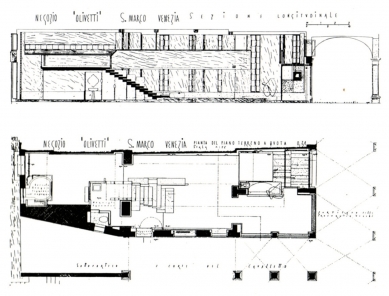
Olivetti Showroom
Olivetti Showroom

Most people approach architects to enhance their living or working environments. In the case of shops, they also seek to increase the attractiveness and saleability of products. However, if you commission a master like Carlo Scarpa, there is a risk that the realized interior itself will become an object of admiration, overshadowing the exhibited items, as happened with the Venetian store of the Olivetti brand.
The current owner of the store (insurance company Generali) underwent an expensive reconstruction of Scarpa's interior in 2011 and opened the Negozio Olivetti museum, which transports you back to the late 1950s, when Olivetti's office technology was at its peak, a fact demonstrated by a network of flagship stores designed by leading architects worldwide. The first Olivetti showroom was created in 1954, designed by the Milan office BBPR on Fifth Avenue in New York. In 1956, Scarpa received an architecture award from Olivetti for his previous work, where new interventions masterfully blend with the historical legacy. A year later, Adriano Olivetti (the son of the company's founder) commissioned architect Carlo Scarpa to design the company's “business card” in the center of Venice. Rather than being a retail space, it was intended to be an exhibition and demonstration area for a company specializing in typewriters, calculators, and personal computers. Since its founding in 1908, Olivetti had grown from the original 30 employees (producing 20 typewriters a week) to reach its peak in the late 50s and early 60s, employing over 40,000 people across seventeen countries. At that time, Olivetti represented a company based in the historic city of Ivrea in northern Italy, dealing with the latest technologies adorned with modern design. By the turn of the millennium, Olivetti was no longer able to keep up with the latest technological trends, leading to the factory’s closure, including the store at Piazza San Marco in 1997.
Carlo Scarpa was commissioned to design one of a series of shops hidden under the colonnade of the Old Procuratoria (Procuratie Vecchie), complementing the northern side of St. Mark's Square. The former headquarters of administrative officials, designed by Bartolomeo Bon in the early 16th century, represented the second most important building of the Venetian Republic after the Doge’s Palace at that time. Currently, this complex is undergoing reconstruction, commissioned to British architect David Chipperfield and set to be completed in 2020. While most stores in St. Mark's Square only feature an entrance façade, Scarpa was entrusted with a similarly narrow space (5 meters wide and 21 meters long), located at the corner of the Sotoportego del Cavalletto alley leading to the rear canal of Bacino Orselo. Scarpa reorganized the entire space, removed dividing walls, inserted a central marble staircase, and suspended the upper floor from the ceiling to avoid obstructive columns on the ground floor. The entrance fountain, staircase, columns, teak blinds, stucco plaster, and mosaic floors can be perceived as artistic exhibits. Scarpa paid meticulous attention to the smallest details with his characteristic precision. Even joints hidden from ordinary sight possess the quality of masterful jewelry. The entire interior is designed not only for displaying Olivetti products but also to showcase Scarpa's craftsmanship in full scope. In the cohesive interior with a unique handwriting, there is space for only one foreign work, which is the bronze sculpture “Nudo al Sole” (Naked in the Sun) by sculptor Alberto Viani, installed to the left of the entrance in a shallow pool of black Belgian marble.
The current owner of the store (insurance company Generali) underwent an expensive reconstruction of Scarpa's interior in 2011 and opened the Negozio Olivetti museum, which transports you back to the late 1950s, when Olivetti's office technology was at its peak, a fact demonstrated by a network of flagship stores designed by leading architects worldwide. The first Olivetti showroom was created in 1954, designed by the Milan office BBPR on Fifth Avenue in New York. In 1956, Scarpa received an architecture award from Olivetti for his previous work, where new interventions masterfully blend with the historical legacy. A year later, Adriano Olivetti (the son of the company's founder) commissioned architect Carlo Scarpa to design the company's “business card” in the center of Venice. Rather than being a retail space, it was intended to be an exhibition and demonstration area for a company specializing in typewriters, calculators, and personal computers. Since its founding in 1908, Olivetti had grown from the original 30 employees (producing 20 typewriters a week) to reach its peak in the late 50s and early 60s, employing over 40,000 people across seventeen countries. At that time, Olivetti represented a company based in the historic city of Ivrea in northern Italy, dealing with the latest technologies adorned with modern design. By the turn of the millennium, Olivetti was no longer able to keep up with the latest technological trends, leading to the factory’s closure, including the store at Piazza San Marco in 1997.
Carlo Scarpa was commissioned to design one of a series of shops hidden under the colonnade of the Old Procuratoria (Procuratie Vecchie), complementing the northern side of St. Mark's Square. The former headquarters of administrative officials, designed by Bartolomeo Bon in the early 16th century, represented the second most important building of the Venetian Republic after the Doge’s Palace at that time. Currently, this complex is undergoing reconstruction, commissioned to British architect David Chipperfield and set to be completed in 2020. While most stores in St. Mark's Square only feature an entrance façade, Scarpa was entrusted with a similarly narrow space (5 meters wide and 21 meters long), located at the corner of the Sotoportego del Cavalletto alley leading to the rear canal of Bacino Orselo. Scarpa reorganized the entire space, removed dividing walls, inserted a central marble staircase, and suspended the upper floor from the ceiling to avoid obstructive columns on the ground floor. The entrance fountain, staircase, columns, teak blinds, stucco plaster, and mosaic floors can be perceived as artistic exhibits. Scarpa paid meticulous attention to the smallest details with his characteristic precision. Even joints hidden from ordinary sight possess the quality of masterful jewelry. The entire interior is designed not only for displaying Olivetti products but also to showcase Scarpa's craftsmanship in full scope. In the cohesive interior with a unique handwriting, there is space for only one foreign work, which is the bronze sculpture “Nudo al Sole” (Naked in the Sun) by sculptor Alberto Viani, installed to the left of the entrance in a shallow pool of black Belgian marble.
The English translation is powered by AI tool. Switch to Czech to view the original text source.
0 comments
add comment


